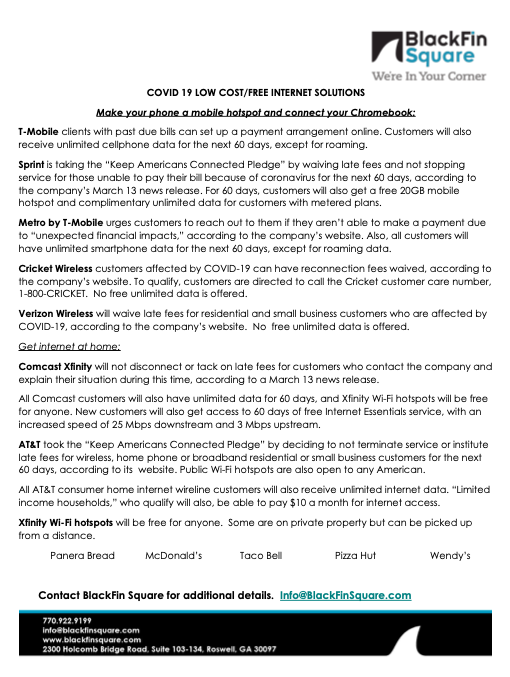How To: Waste Less Time And Save Big Time On Your Telecom Expenses
As anyone who deals with telecom knows, it’s a very difficult category of spend. Companies that try to reduce telecom expenses are often presented with a harsh reality: It takes a lot of time and resources.
So the question is this. How do companies reduce their telecom expenses? Which tactics yield the best results, and give them the best bang for their buck?
There are four primary areas that a managed telecom partner can help you save big on your telecom expenses!
Optimizing Your Contracts
Optimizing your prices, discounts, and business terms is very important. If you haven’t done so in the last 18 months it’s time to reoptimize your carrier contracts.
Subscriptions And Services
Provider and vendor plans based on actual usage is an optimization that you should perform monthly. Not every business does this, some only do it quarterly or semi-annually, but it’s best done every month.
Compliance Monitoring
Invoice auditing to check billing errors is very important. There should also be monitoring of different incentives, discounts, and other contractual terms.
These telecom costs need to be monitored in real-time. A managed telecom partner can help you with your compliance monitoring, and make sure that all your money is going into the right places.
Demand Management
Optimizing internal policies like service usage and demand management is another service that should be performed monthly. A managed telecom partner will look into all rogue spending, and look into company policies to make sure there are policies in place that prevent rogue spending. They will also focus on the four areas and yield the best results so get you the best bang for your buck.
Learn more about how you could be saving big on your telecom services!
How Choosing The Right Managed Telecom Partner Can Save You Thousands
As a CIO you don’t have time to go through bills and perform an invoice audit. You need the right managed telecom partner to help you perform these audits.
With the right managed telecom partner in your corner helping you and fighting for you, you can save thousands. How?
They Can Help You Review Your Invoices
People often review bank statements, and credit card charges to make sure everything is in proper order. But do people review their other bills as well?
Electrical, telephone, and other utility bills can also be filled with overcharges. The bills you’re going to see this on the most are the first bills when you modify or add services.
You may see that first bill and think that the price is just the cost of switching over and may not think anything of it. You can easily lose money here. A managed telecom partner can keep you from making this mistake.
They Can Check And Make Sure Your Services Have Been Properly Cancelled
Sometimes even after you cancel a service, you can still be charged for that service. After canceling a service people generally believe that’s the end of it, and cease to check if they’re still being charged.
You might be paying for several different services in which you no longer use. A managed telecom partner can check and make sure that every canceled service, is actually canceled.
Matching Contracts/ Taxing
There are times when your invoices don’t match your contacts as well. You might sign for a certain service and get charged for another one. The managed telecom partner can check this and make sure that you’re being charged for what you contracted for.
Taxes and tariffs change over time and sometimes those changes aren’t reflected in your contracts. You may be overpaying this way as well.
Multiple Contracts
Your contract can get multiplied sometimes, and you end up paying twice as much as you should be.
These are some of the reasons that having a telecom partner can save you thousands. You’re busy and you don’t have time to check on all of these things to make sure that you’re billing is correct.
Engaging with a partner saves you money, time, and resources. So don’t try and do all of this yourself. Get yourself a great partner and start saving money.
Learn more about how you could be saving big on your telecom services!
How to: Leverage Your Organization’s Size for Telecom Service Savings
Streamlining and being cost-efficient with your telecom service isn’t easy. It’s a complicated, fast-moving field that is absolutely necessary for your company to remain competitive, but usually comes with a significant cost. It’s easy to fall into a situation where your billing and invoicing are decentralized and you have multiple contracts for the same service in different locations. Even if you’re with the same carrier, services and prices may be different depending on the location.
Enterprise organizations have a unique opportunity when it comes to telecom expense reduction: leveraging their locations and size to lower costs. You are a big organization and you’ve worked hard to achieve that. You use your size and reach to provide a higher level of service to your customers and clients, and you should use that same size and reach to negotiate better prices on the services you need to do business.
The same contract and invoice audits that ensure that you are receiving all relevant services and aren’t overpaying can also be used to ensure that all relevant accounts are rolling under the master contract. By moving all accounts to the master contract, you can realize savings that come from realizing your true purchasing power.
Telecom service providers are loath to provide any sort of enterprise discount on a contract for just one location. But if you are an enterprise organization with multiple locations, that same service provider will be much more willing to work with you on a reduced price in order to guarantee your business.
By leveraging your full purchasing power, you may also be able to identify migration opportunities you didn’t think were manageable. One way to realize network cost savings is by upgrading your services as an enterprise.
Telecom and network services is a field where the technology it provides is growing by leaps and bounds every year, if not every few months. This means that the services you purchased two years ago are probably out of date.
One way to save money, and provide better service to your employees, clients, and customers, is by upgrading those same systems. It may seem like the more expensive endeavor but, by purchasing as a unified enterprise, you will be able to negotiate even more savings in the short- and long-term.
BlackFin Square also uses our relationships and global partnerships to secure savings for our clients. As a leader in the field, we’ve worked with service providers around the world for years. We’ve carefully cultivated these relationships so that we can secure the best services at the best prices for our clients.
If you haven’t consolidated your telecom and network services contracts under one master account, now is the time to consider such a move. It will save your organization money and allow you to provide a higher level of service for all of your stakeholders.
Learn more about how you could be saving big on your telecom services!
Why You’re Overpaying for Your Telecom Services
Now that you know how to save money on telecom services through a contract audit, you’re probably wondering why you’ve been overpaying so much for these services. The answer is an easy one.
You’re not reviewing the first invoices. You probably are in the habit of reviewing your monthly credit card statement for fraudulent charges because you know the danger that credit thieves pose. But do you also review your telephone, electric, and other utility bills, especially the first invoice after a change has been requested? Probably not.
The thinking goes that these are contracted services, so I’m just being billed for what I signed up for. This kind of thinking tends to leak over into the professional world as well. And we wish it was as simple as “I signed the contract so that’s what I’m being billed.” But, unfortunately, it’s not.
35% of all telecom invoices have some sort of hidden error and 85% of those errors are in the provider’s favor. An invoice audit that compares contracted costs to your first invoice costs can find these errors so you can ensure that they are corrected.
Some common invoicing errors that we see are:
- Unprocessed disconnections: When you decide you no longer need a service and inform your provider, it’s common to assume that the service will come off your bill. However, there’s a chance that you’re still being charged for services you’ve asked to be disconnected.
- Contract compliance: Many times the invoice doesn’t match the contract.
- Taxes/Tariffs: As taxes and tariffs change, your invoice may not be up-to-date with the latest taxes and tariffs.
- Multiplicity: It’s not uncommon for companies to be billed more than once for a service.
Our invoice audit can find these errors so they can be disputed, allowing you to save money. This invoice audit also allows us to track the SLA credits that you are owed, as well as providing additional billing reviews for anomalies.
At the end of this process, the information collected can be used to create financial reports that outline the amount that your spending on telecom and network services, as well as a breakdown of that, spend, so you can make data-driven decisions about how to cut your telecom costs.
As obvious as it may sound, an invoice audit is the easiest way to find real places where you can realize almost immediate savings.
Learn more about how you could be saving big on your telecom services!
The First Step in Creating Cost Savings for Your Telecom Services
The first step to creating the cost savings that your organization needs to realize from your telecom services is a full audit of all existing telecom and network contracts on a global basis. This audit allows us to see things that may have been missed or forgotten over the life of the contract. These are things like:
- Contracted services. When reviewing contracts, one of the first things we note is exactly what services are promised in the contract. An easy way to start identifying telecom cost savings is by figuring out what you are paying for if you need it, and if you are receiving it.
- Expiration dates. Some service providers include evergreen clauses in their contracts that state if no action is taken, the contract automatically renews. By noting expiration dates, we are able to make sure contracts that need to be canceled are canceled. Identifying evergreen clauses also allows us to bring services to your attention that you may not realize you’re paying for anymore.
- Out-of-date services. If you contracted for specific services years ago, odds are they are now out-of-date due to the rapid technological progress in the telecom field. Understanding the services you are paying for, and the alternatives now available, can help you streamline them to lower your bottom line.
- Expired services. There’s a better than a good chance that if your internal IT team discontinued service or product, and the contract associated with that service was never renegotiated, you are still paying for that service. A contract audit can reveal these kinds of issues.
- Other contractual obligations, such as SLAs. A contract audit can also reveal ways to save money through SLA credits or other clauses built in to provide restitution for poor service.
This clear view of your contractual objectives and delivered services allows the creation of an assessment that either:
- provides a strategy for migration to less expensive and more robust technology or
- allows for renegotiation and lowered costs for currently installed services.
Either of these documents will be the foundation of the cost savings process moving forward.
At BlackFin Square, we have also found that this audit process allows us to create a baseline expense model for telecom spend that can then be used to compare multiple provider solutions and foundational costs. This financial comparison between providers is a great executive tool that easily shows opportunity costs, proposed savings, migration costs, and an install base. It can also be used to establish fiscal year budget baselines.
No matter what your second step is in the process of lowering your telecom spend, a contract audit absolutely has to be the first step. It’s the only guaranteed way to know exactly where your telecom and network dollars are going and whether those places are the best places for those dollars to be spent.
Learn more about how you could be saving big on your telecom services!
Why Telecom Costs Can Be So Complicated
Telecom services are a huge portion of the budget of your enterprise organization. However, it tends to be the part of the budget that no one really has a complete grasp on. Since telecom services are so crucial to your organization’s function, you know that services can be expensive, but sometimes it’s hard to grasp why your telecom costs are so high.
We’ve helped many organizations streamline and lower their overall telecom costs and can help to shed a little light on this problem.
First, to effectively run an enterprise organization requires network and telecom services that cover multiple locations, usually in different cities, states, or even countries. These services are usually contracted over time, as offices move, or as a business is acquired. When this happens, it can be easy to lose track of these different contracted services leaving your IT organization with contracts for services that are outdated, insufficient, and expensive.
Secondly, organizations can easily find themselves in situations where they are paying for services that are not installed, services that were disconnected and then never dropped off the invoice, or services they never wanted in the first place. This happens more often than you imagine. Service providers are also notorious for practices where they either bill you for services you didn’t contract for, switch you to a different service with no notice, or both.
Many enterprise organizations can also find themselves overpaying because they are not taking advantage of their purchasing power and leveraged agreements. By consolidating all of your service contracts under one master account, you can realize savings that come from realizing your true purchasing power.
Finally, most service contracts come with clauses that guarantee a certain level of service and, if that service is not delivered for any reason, they offer a credit for the time of the outage or service impairment. These are called “Service Level Agreements” or SLAs. Many organizations that experience poor service or outages are eligible for credits through their contracted SLA but most organizations that experience these impairments are not submitting for their SLA credits, leaving free money on the table.
Having it laid out in such stark terms can make you wonder how any of this could happen. But there’s a reason that telecom is the most notoriously difficult spend category in organizations. The vast majority of organizations don’t have a grasp on their contractual obligations such as when contracts expire, what exactly are the contracted services, or they can’t find contracts and aren’t even checking to see if their invoices are correct.
This leads to financial consequences for the entire enterprise. Telecom services are a place where a significant amount of money can be saved if there is an organized approach to auditing, reviewing, and researching the current telecom contracts. It can take a large amount of time, but the results are worth it.
Learn more about how you could be saving big on your telecom services.
Thoughts to Consider Before Choosing an SD-WAN Vendor
SD-WAN has emerged as the must-have technology for distributed organizations. With benefits such as increased network speed and ease of use, it has helped many businesses connect their disparate offices in one, relatively seamless network. If you are thinking about adopting this white-hot technology, here are some things to consider as you evaluate your SD-WAN vendor options.
The first thing to determine is what your future needs are for connecting your employees while evaluating the business value that SD-WAN can bring to your business. When prioritizing the features you want Lee Doyle of Network World recommends asking these questions:
- How many branch locations do you currently have? How many employees are at distributed branches?
- Which applications are mission critical to distributed employees? Where are these applications hosted? (data center, SaaS, public cloud)
- What are the current WAN bandwidth requirements at each location and how fast is the demand for WAN bandwidth growing? What is your current spending on WAN bandwidth?
- What are your key security requirements at the branch?
When you’ve answered these, you can move on to looking for a potential SD-WAN service provider that can help you implement your SD-WAN solution.
Do you want a DIY approach or a managed solution?
A managed services approach to SD-WAN technology means you will choose a vendor that will take on your SD-WAN project end-to-end. They will work with you to determine your needs and what features you want and use that information to choose a technology solution. They will navigate the vendor selection process and manage the relationship once your SD-WAN solution is up and running. They will take care of the necessary updates and routine maintenance.
If you choose to go for an internally managed system, the DIY approach, you will need to review technology vendors yourself to choose the one that best suits your bandwidth requirements and current WAN/LAN architecture. The right product matters, so this is something you’ll want to think through.
What network security options are you looking for?
When you invest in SD-WAN technology, you also gain the ability to secure unreliable Internet links and traffic flows. They generally provide basic firewall capabilities as well as content filtering, endpoint identification and management, and policy enforcement capabilities. They can also deploy packet identification to understand your traffic flows that determine if traffic is coming from a trusted location. It’s important to talk to your technology vendor to understand the specific network security capabilities they offer with their SD-WAN options.
How easy is the deployment?
When you have remote offices, you may or may not have on-location IT staff. If you don’t have IT staff on location, you need to ensure that whatever SD-WAN option you choose is easily deployed and understood by those without deep technical knowledge. SD-WAN products should be plug-and-play with WAN circuits and remote configuration. They should easily integrate into the existing network equipment and network security products at the branch.
What does your current WAN/LAN branch architecture look like?
Unless you are getting rid of your current set-up and starting from scratch, you will already have a base of WAN and LAN equipment already deployed that a new SD-WAN solution will need to integrate with. This can include routers, firewalls, IP VPNs, LAN switches, Wi-Fi controllers, and WAN optimization products. While SD-WAN technology usually integrates well with your existing set-up, it will probably require you to deploy another piece of equipment at your branch locations. This process gives your IT department the opportunity to review your existing set-up and review what’s working and what could be replaced.
If you’re looking to find a partner for your SD-WAN managed services, we can help. Contact us for a free consultation.
Trends in SD-WAN You Need to Know About
2020 is going to be a year of innovation. Businesses are poised to embrace the Internet of Things (IoT) more fully and rely more and more on the cloud to lower costs and remain agile. This means that the white-hot SD-WAN market will continue to explode with more vendors and suppliers introducing new products or building on their existing offerings. In fact, PRNewswire’s research shows that the SD-WAN market and the like will exceed $5 Billion dollars by 2025.
With all of this, what should we expect? We expect you will see innovations in cloud onramps, support for leading SaaS applications, security and management/automation platforms as the year goes on. But what else is in store for SD-WAN this year? Here are the top five trends we’re watching this year.
Improved security, both in vendor partnerships and built into the technology.
The nature of SD-WAN, leveraging the bandwidth of mostly unsecured internet connections, makes it particularly vulnerable security-wise. Since the beginning, SD-WAN vendors have beefed up their offerings with additional security to ensure data remains safe. This year, we expect that SD-WAN suppliers will continue to improve the depth and breadth of their native security protocols to counter the rising tide of cybercrime.
Additionally, we expect that SD-WAN suppliers will start to take advantage of strategic partnerships with big-name security firms, building those capabilities into their offerings. These partnerships should offer a one-stop security solution for easy orchestration and management, along with the ability to include analytics that may warn on impending attacks.
Enhanced integration with large cloud providers.
No business uses just one cloud provider anymore. The offerings are too numerous and too critical to limit to just one application. In the coming year, you can expect SD-WAN to give your employees a seamless user experience, no matter what cloud-based application they are using. SD-WAN automation will also make adding new cloud applications easier than ever, despite the inherent complexities.
Greater extension of SD-WAN deployment.
SD-WAN deployment is poised to break out of the office in the coming year. As our lives become ever more technology-enabled, the SD-WAN edge will continue to expand to ships, trains, and even the backpacks of first responders, wherever high-quality cloud-connected activity is needed. This trend will drive WAN transformation beyond the office and into every aspect of the way business is done.
Better support for SaaS.
With the expansion of business reliance on the cloud, SaaS providers have become more and more crucial to the way business gets done. But it’s challenging for today’s IT departments to guarantee the quality of service to these applications because of non-standard services, security mechanisms, APIs and management tools. Currently, it’s up to the IT department to clear each SaaS provider within the SD-WAN management portal. We expect this to change in the coming year. Knowing the importance of the critical SaaS applications, SD-WAN suppliers will continue to improve their automation of policies designed to deliver appropriate QoS without IT intervention.
Service providers enhance their offerings to include managed service options.
Currently, about half of enterprises who have deployed SD-WAN are using a managed services solution, and service providers have taken notice and are gearing up to meet this need. A select few service providers already have years of pilots under their belts. Many have realized that their initial technology options were too limiting to their customers. This year, they will amp up their SD-WAN solutions offerings to more fully satisfy the needs of their customers.
If you’re looking to find a partner for your SD-WAN managed services, we can help. Contact us for a free consultation.















